Workshops for Schools
The Outreach Team regularly run workshops for schools. If you are interested in a visit out to your school or a visit to the department, please email schools.liaison@materials.ox.ac.uk.
Please note: due to our existing programme of events, we have very limited availability for school workshops in February/March and June/July.
See below for details of the workshops we offer:

Tensile testing workshop
Tensile Testing
Who: Y11 (high ability) - Y12 Physics
How many: 20-25 students
Duration: 1-1.5 hours
Students will work in groups of 4 to measure the tensile strength of different materials using a simple tensile tester kit. Each group will plot stress/strain graphs for the material and use these to determine Young’s Modulus. Values for Young’s modulus will be compared to standard values and the experiment evaluated.
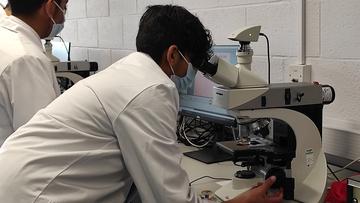
Materials under the microscope workshop
Materials Under the Microscope
Who: Y10-Y12
How many: 20-25 students
Duration: 1 hour
This workshop is held in the Department of Materials Undergraduate Teaching Laboratory
Students will learn how to use optical microscopes to view the microstructure of metals and alloys. They will match what they see using the microscopes to descriptions of the structures and sketch structural features to learn more about the structure of these materials. Students will also see a demonstration of our SEM to learn how electron microscopes differ to optical microscopes and will also learn how samples are prepared for viewing under both types of microscopes.
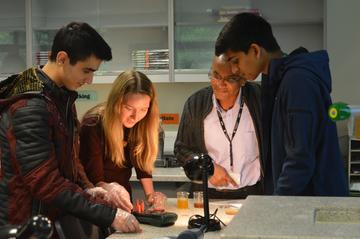
Solar cells workshop
Solar Cells
Who: Y10-12
How many: 20-30 students
Duration: 1-1.5 hours
Students will work in pairs to construct a dye sensitised solar cell using a range of dye sources. The students will measure the voltage of their cells at different intensities of light and compare results for different dyes. Results will be discussed and the science behind the solar cell explained. Students will be asked to put forward ideas for further research in this field and their ideas will be linked to current research on solar cells in the department and in other HEIs.
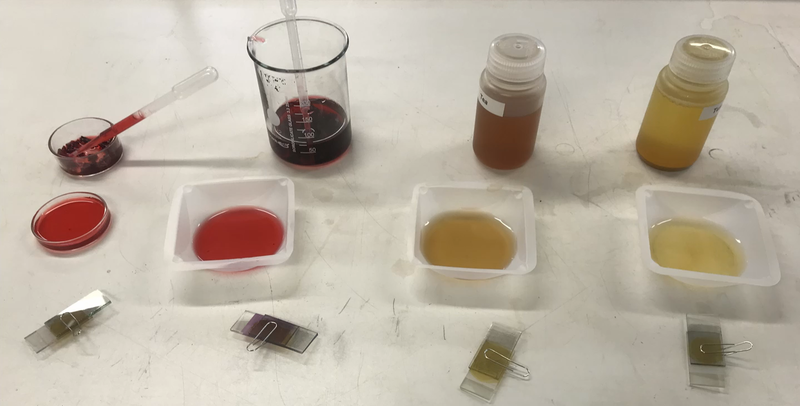
Dye sensitized solar cells
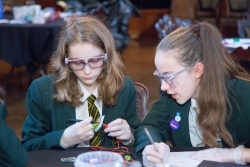
Electrifying Experience workshop
An Electrifying Experience
Who: Y8-10
How many: 20-30 students
Duration: 1-1.5 hours
Students find out about the very invention that marked the birth of a new branch of chemistry, called electrochemistry: the “voltaic pile”. Students will build their own voltaic pile and investigate the effect of the number of cells on the voltage of the battery. Research in this area will be introduced and discussed.
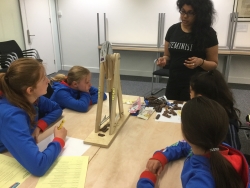
Chocolate workshop
Investigating Materials Using Chocolate
Who: Y8-10
How many: 20 students
Duration: 1-1.5 hours
Students investigate the properties of materials to include hardness, density, and fracture energy using different chocolate. Students put forward ideas to make an ultimate chocolate bar and this is related to microstructure of materials and the effect of alloying.

Slime workshop
The Science of Slime
Who: Y5-Y9
How many: 20-30 students
Duration: 0.5-1 hours
Students make samples of slime using different amounts of ingredients to test its stretch, bounce, and viscosity. Students learn about the molecular structure of PVA glue (the main ingredient) and the resulting slime and why adding the ingredients together changes the properties of the material.
Egg Drop Challenge
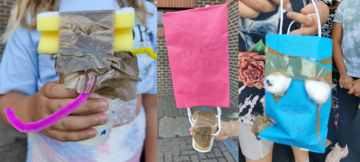
Example designs from the Egg Drop Challenge
Who: Y5+
How many: up to 30 students
Duration: 0.5-1 hours
Students will work in groups to design and make reusable packaging for an egg designed to protect it from breaking when dropped from a height. The challenge is that they are only allowed a very limited amount of materials! Students get a limited time to plan their design in their groups and to then build their design before their design is tested. Their creations are then marked for the scientific reasoning behind the design, how well it protected their egg, and also how visually appealing the design is.



